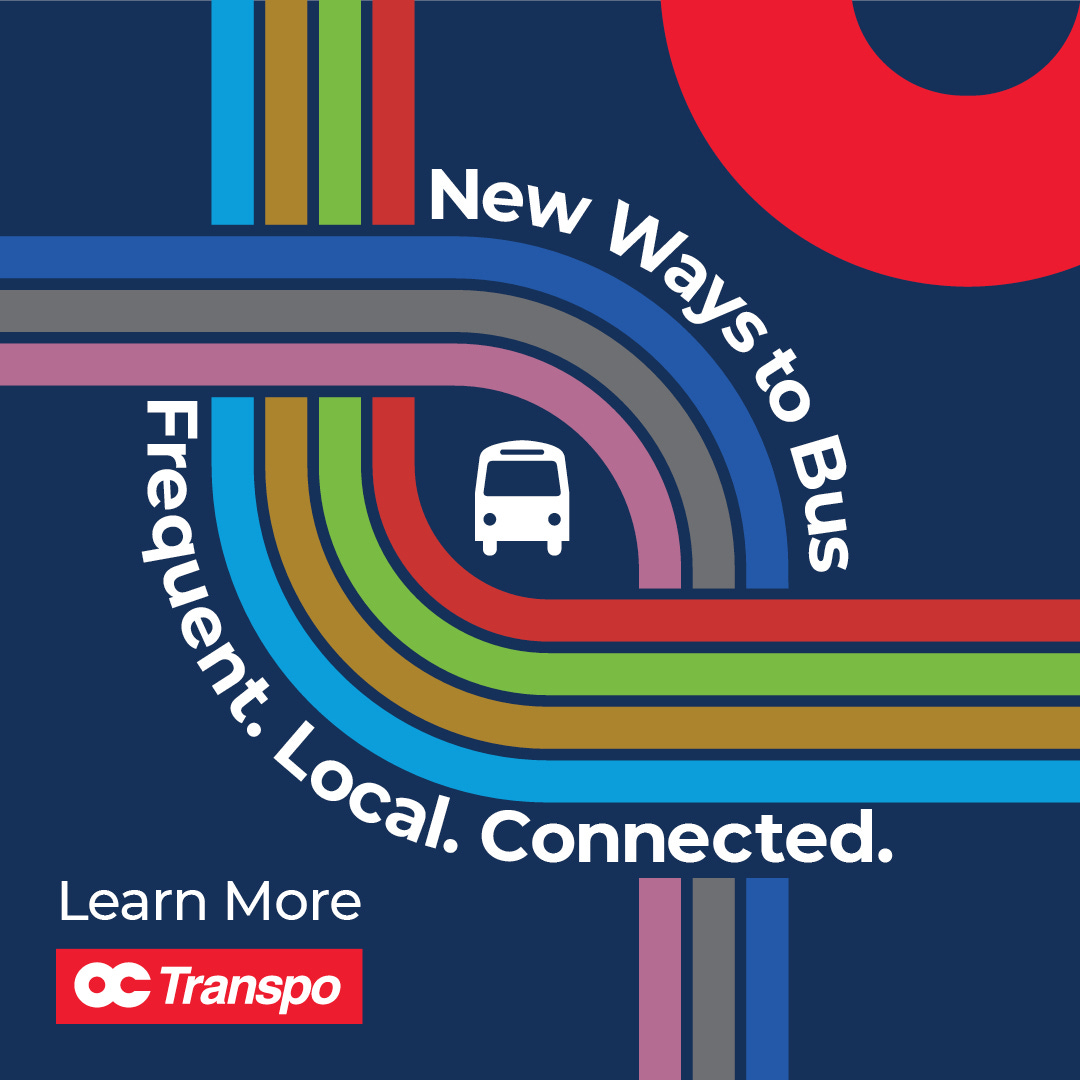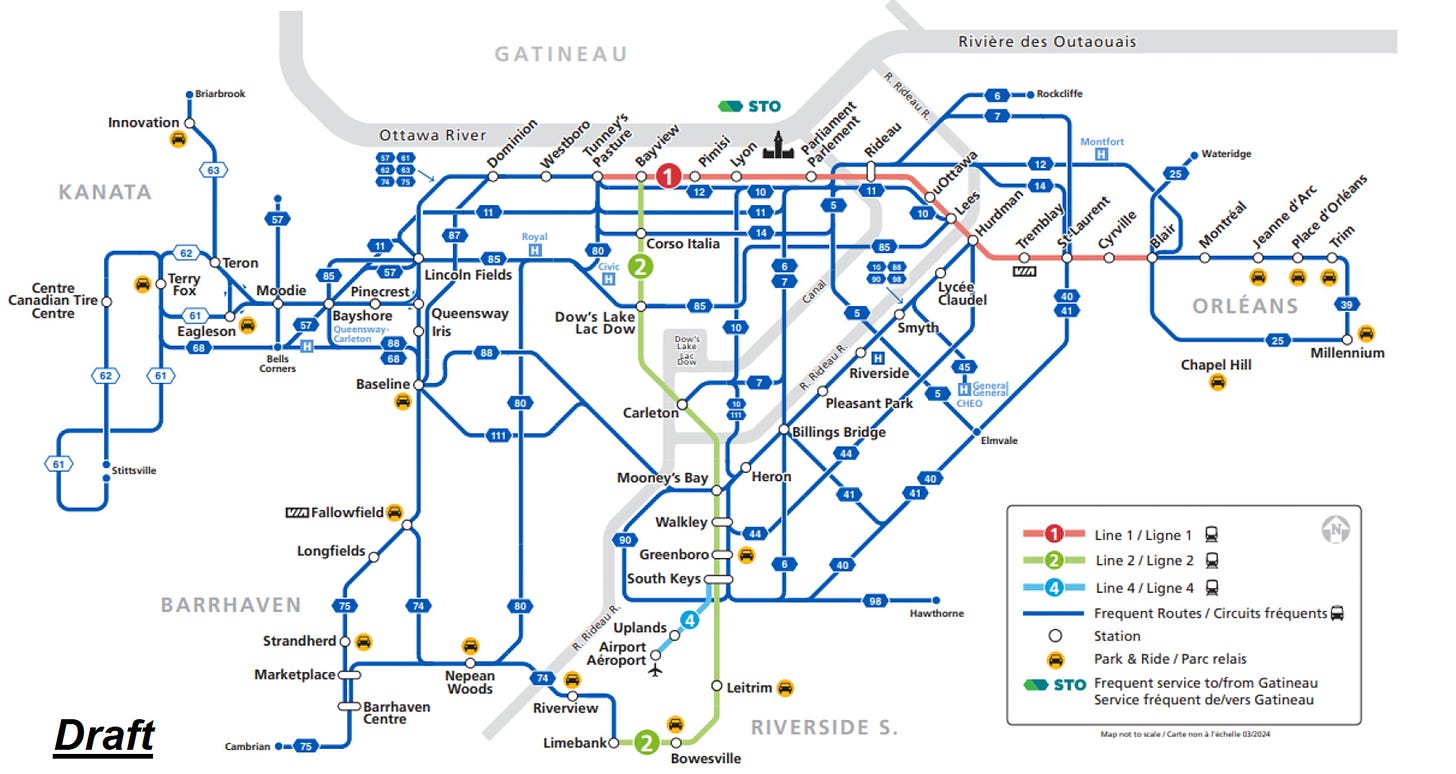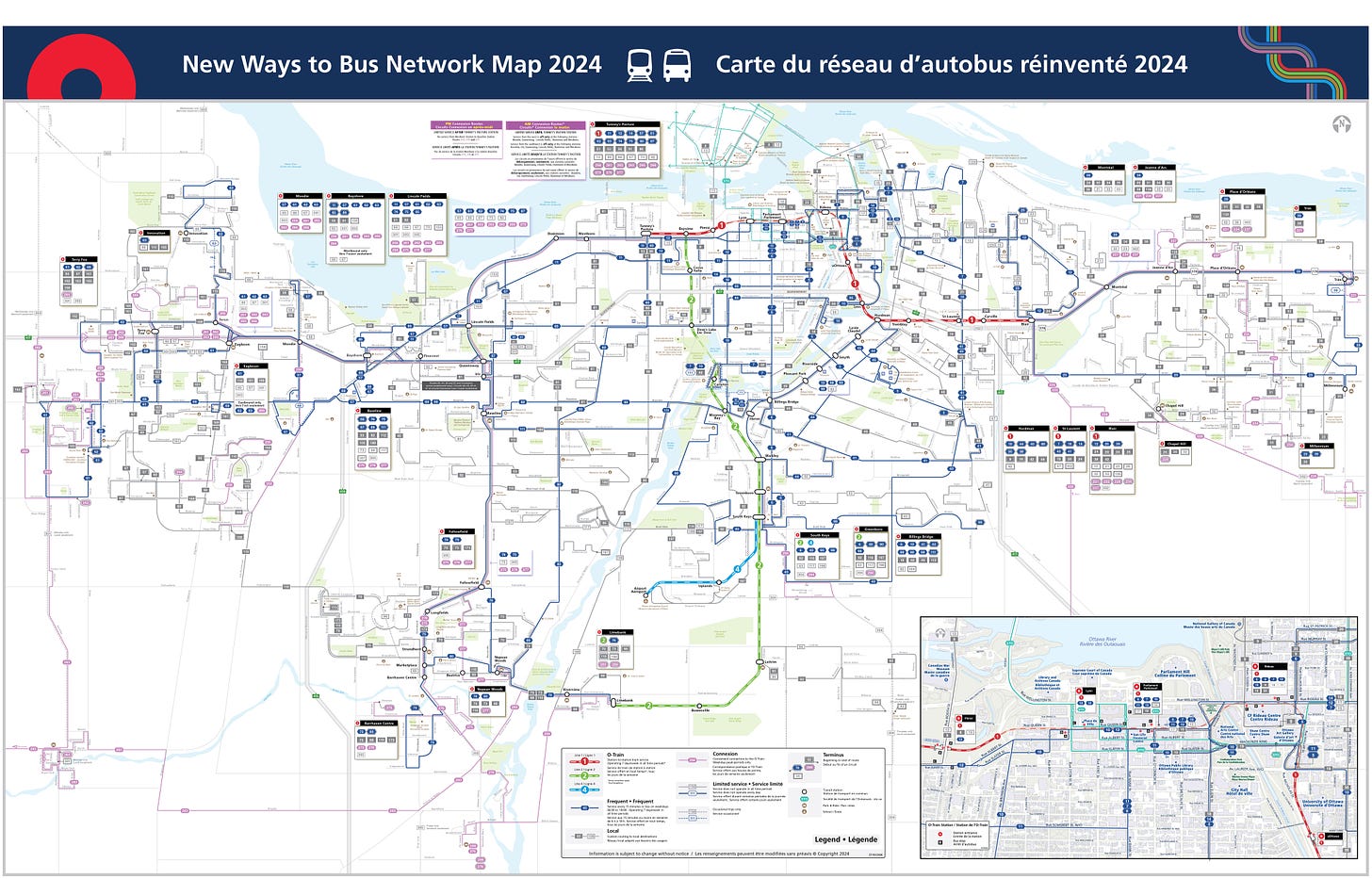OC Transpo is introducing a new bus network later this year to coincide with the start of LRT Lines 2 and 4. It’ll be a big change. Every neighbourhood and almost every customer will see changes to their trip.
I won’t minimize the negative impact it will have on some passengers, who will have a bit longer to walk or an extra transfer. People make decisions on where to live and to work based on transit service, so change is not something transit planners can take lightly. On the whole, the new network will improve the transit experience for the majority of current – and future – OC Transpo passengers. (For example: Here’s how the new network improves service in Stittsville.)
A lot of critics have called the new network a cost-cutting measure, but it’s really not. OC Transpo’s budget is going up by over $35-million (or 4.9%) in 2024 versus 2023. And while it’s true that the new bus network will have 74,000 service hours less than the current one, that reduction is offset by more than 62,000 hours added with the higher-capacity O-Train Lines 2 and 4. In the end we’re talking about a net reduction of 12,000 yearly service hours out of a total of 2.111 million hours (or 0.5%).1
Ridership is down roughly 25% since 2019. There are 25 million fewer transit trips per year, mostly due to more people working from home. (And many of those lost trips were between the suburbs and downtown.)
There are and more students using transit, and they’re making up a higher proportion of riders. There are new neighbourhoods and new employment areas and new retail centres. The current network needs to evolve to serve this changing demand.
So last year OC Transpo launched a major review of bus routes. They looked at ridership data and housing growth projections, they talked to major employers (governments, schools, hospitals, technology), and they collected feedback from over 8,000 customers. In November, they brought the results to Transit Commission and earlier this month they launched the public-facing communications campaign: New Ways to Bus.
So what is changing and why is it better?
Frequency. There will be 27 routes running seven days a week, including every 15 minutes or less during the weekdays. These routes touch every part of the City, east, west and south, and they interconnect with LRT.
High frequency is the foundation of a good transit system. It means less need to plan ahead, better connections, and more reliability. Transit consultant Jarrett Walker calls frequency “a ferocious ridership-driver”:
“People who are used to getting around by a private vehicle (car or bike) often underestimate the importance of frequency, because there isn’t an equivalent to it in their experience. A private vehicle is ready to go when you are, but transit is not going until it comes. High frequency means transit is coming soon, which means that it approximates the feeling of liberty you have with your private vehicle – that you can go anytime. Frequency is freedom!”2
Local service. This is something that comes up again and again when you talk to OC Transpo customers. They want to use transit to move around their communities for daily errands and activities. For decades, much of OC Transpo’s network prioritized peak-hour trips from the suburbs to downtown and work – so this is a big shift to improve service within communities, at any time of the day.
Connections. I mentioned at the start of this that some customers would have an additional transfer or two. Those are connections, and while they can add a few minutes and a bit of inconvenience, the positive trade-off is that it creates more options to reach many more destinations: employment areas, retail destinations, recreation and entertainment. (Here’s Jarrett Walker again on why connections make for a better transit network.)
Overall, OC Transpo is shifting service to where they see more demand for transit. Transit won’t be a choice for everyone, but it still is – and can be – the choice for a lot of people in our community. Especially people who live near transit stations, along major transit corridors, and in higher-density neighbourhoods. These locations tend to have higher transit usage and if we serve them well, we’ll see a virtuous circle: Higher demand —> More frequent service —> Better transit —> Even more demand.
Other cities have embarked on major reviews based on the same principles and have seen a rebound in ridership. Houston and Edmonton are good examples where an updated bus network has led to ridership gains. I’m optimistic we’ll see similar results in Ottawa.
Over the coming weeks and months OC Transpo will be dripping additional bits of information about the new network. In April, we’ll get detailed schedules and OC Transpo’s Travel Planner will let you plug in your origin and destination so that you can explore potential new trip options. The Transit app will also have a route planning tool to try before the new routes come into effect.
If you’re a regular OC Transpo user, please check out these resources and familiarize yourself with the new service. If you haven’t tried OC Transpo in a while, this would be a good opportunity to see where it might fit in to your transportation needs.
We’re expecting the new network to launch sometime in late spring or early summer, depending on when LRT Lines 2 & 4 open. Stay tuned.
Here’s the new route map that you’ll soon see posted at major bus stops and train stations. (Click here for full size.)
“Service hours” is just one dimension of a bus network. One service hour for a route in a low-density suburb with only a handful of customers per day is very different from one service hour on a road like Baseline or Carling when buses are packed.
Jarrett Walker wrote the excellent Human Transit, available at the Ottawa Public Library.







Hey Glen you missed the 49 Pleasant Park Rd in Ward 18 that runs every 2 hours non peak. It serves Alta Vista through the center of the ward. We can’t use the bus, faster to walk downtown